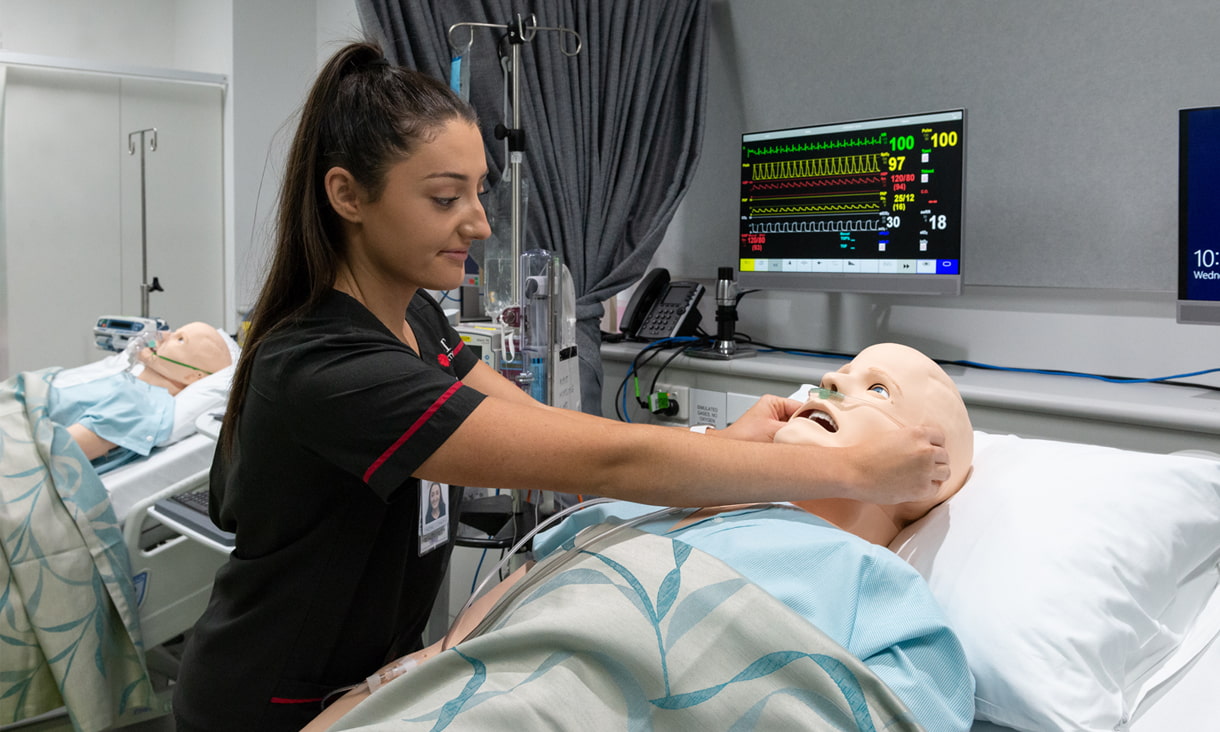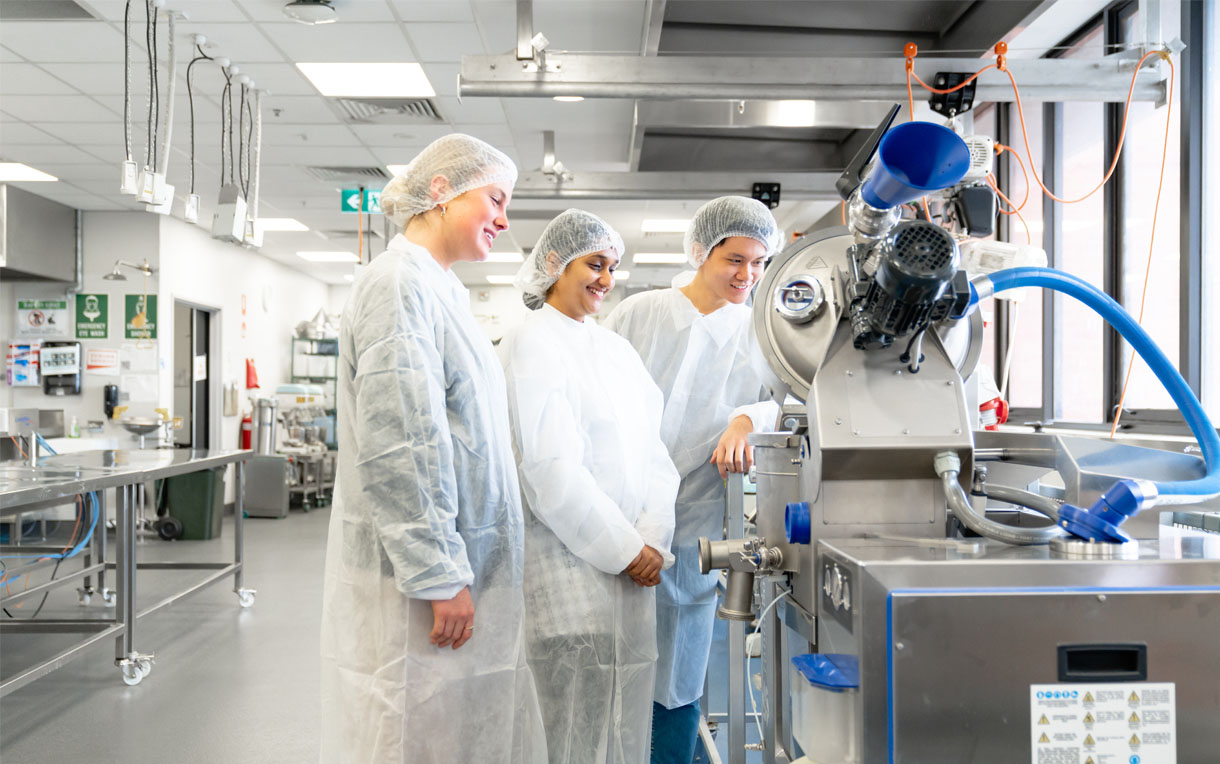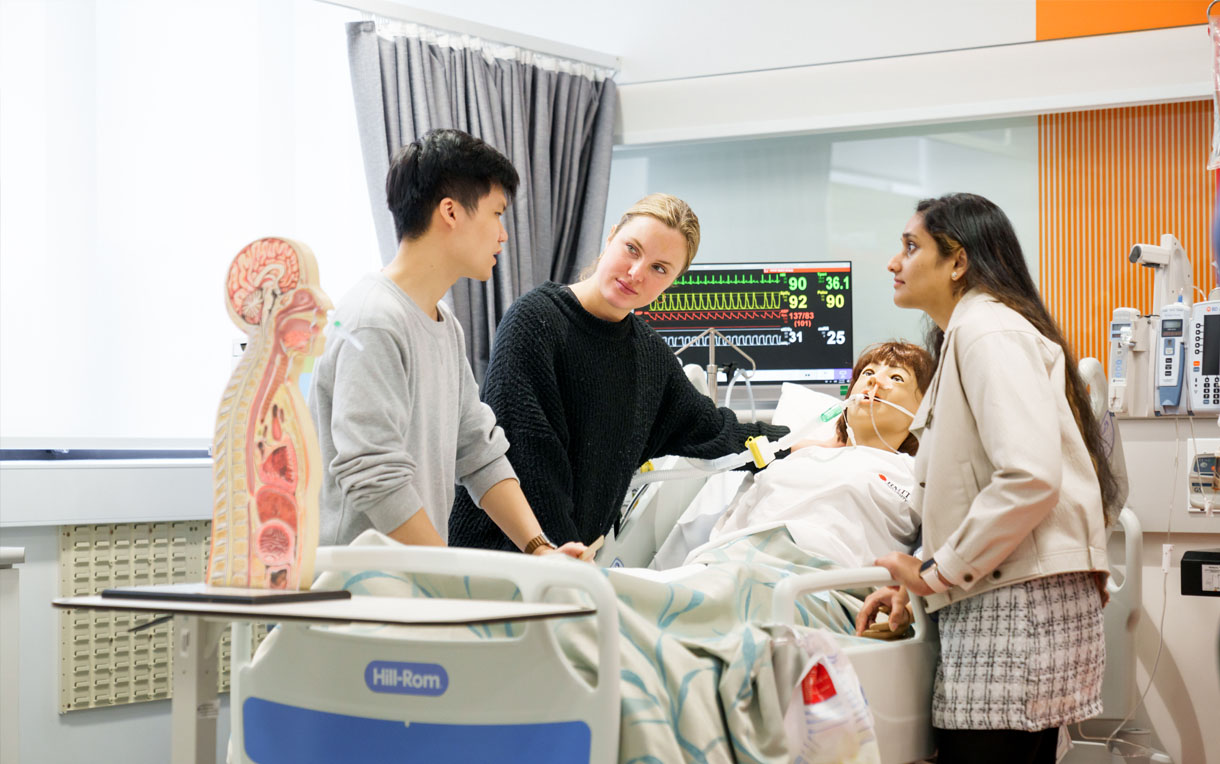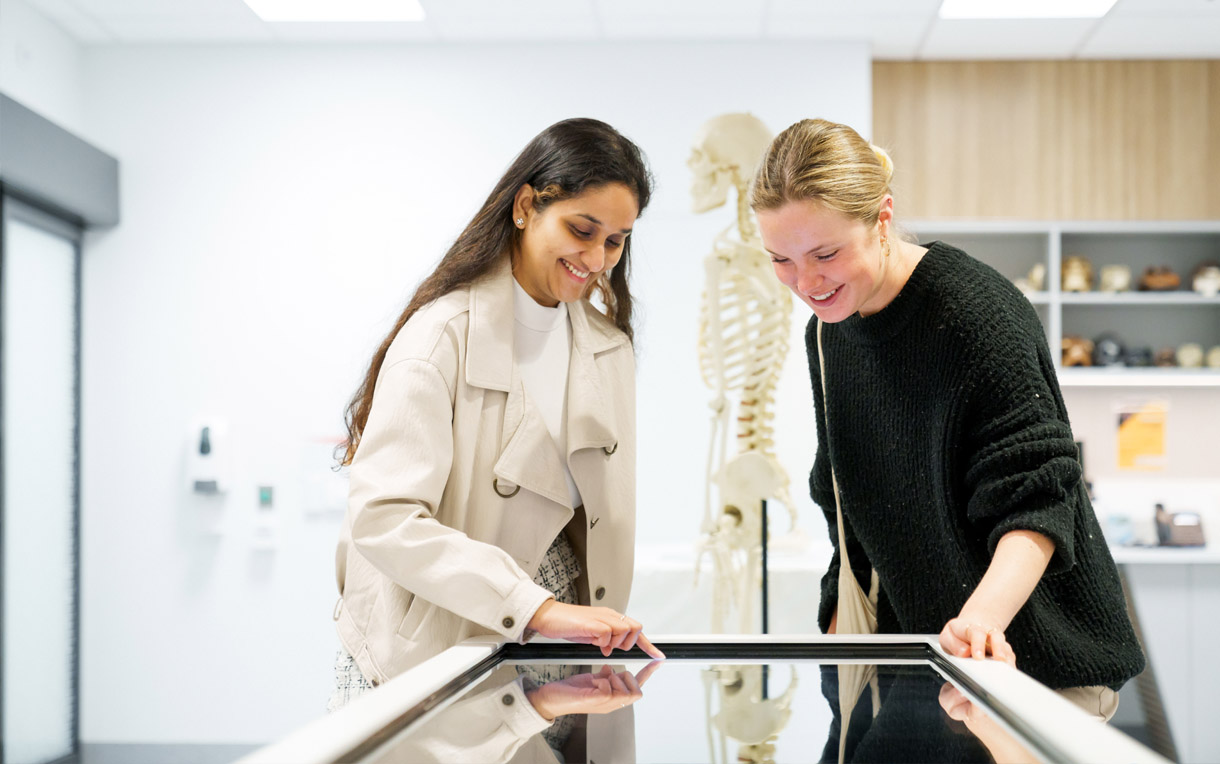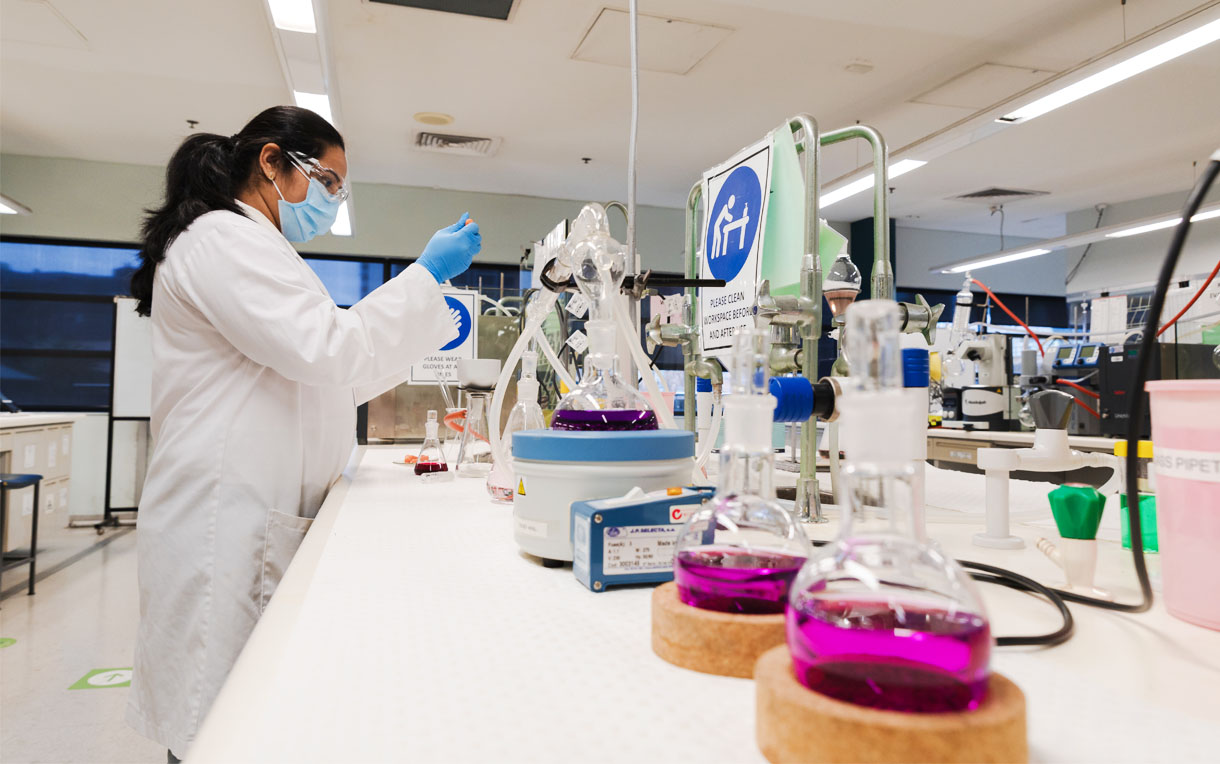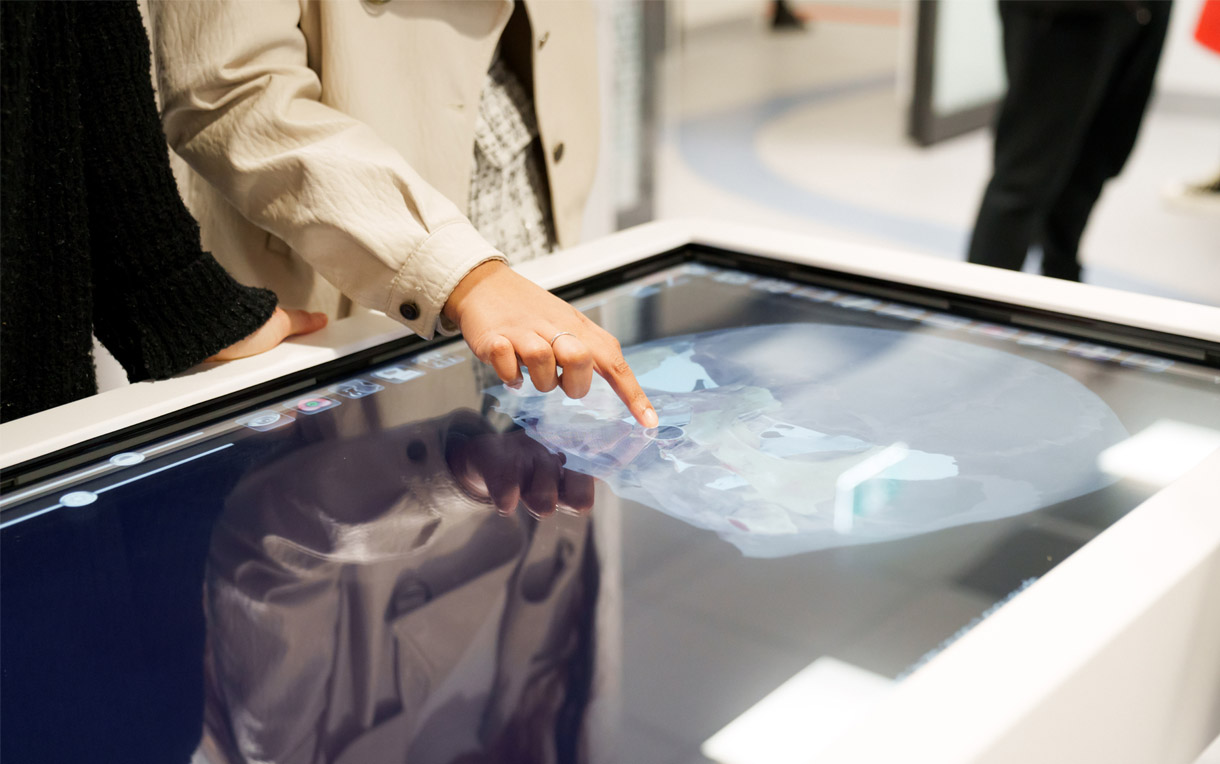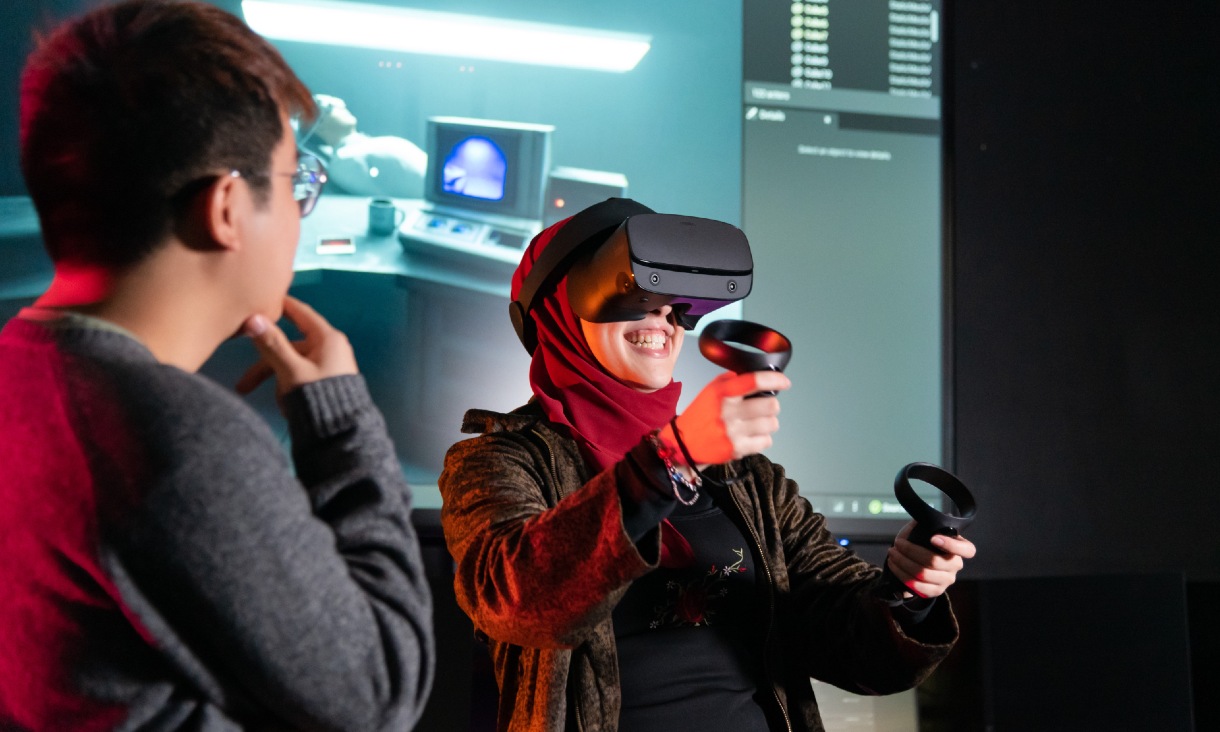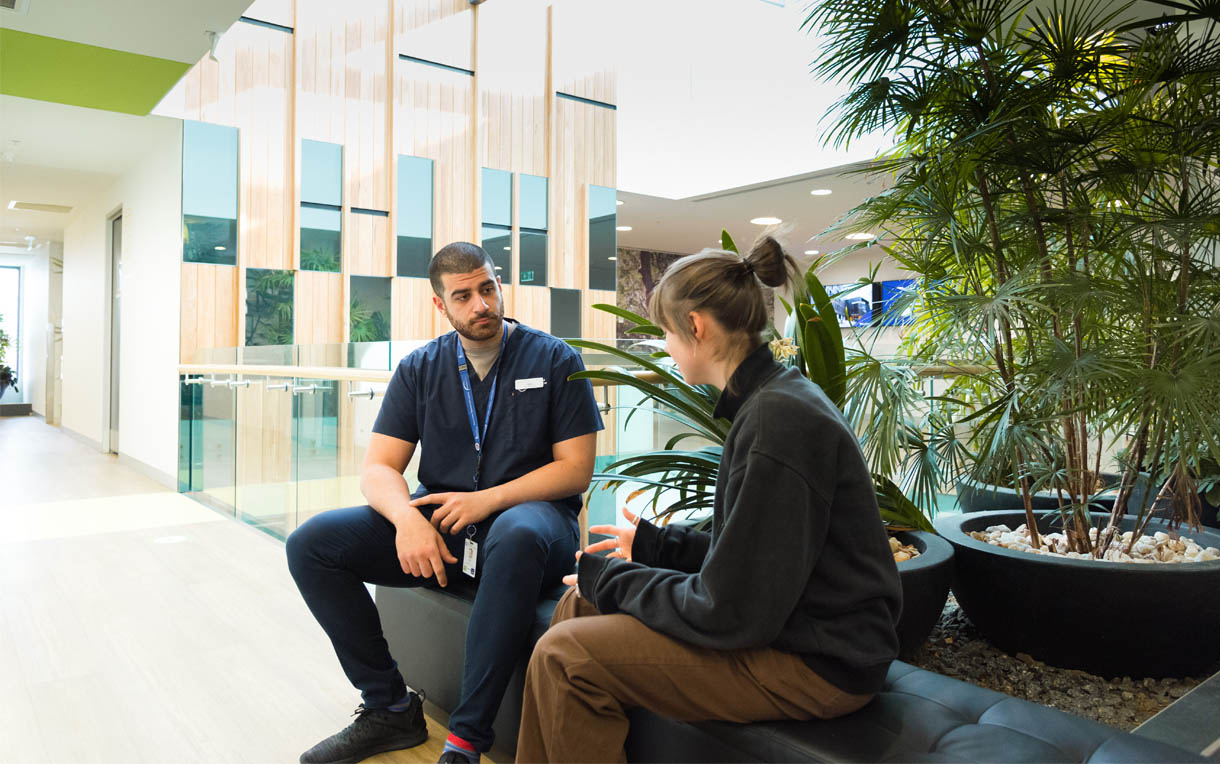Health facilities aren’t the only places to find the latest technology. Introducing the Anatomage Table, a 3D anatomy visualisation and virtual dissection tool that is used in the digital human bioscience facilities at RMIT.
The Anatomage Table acts as a digital cadaver, allowing biomedical science students and academics the opportunity to digitally explore and dissect the anatomical systems of the body. The table allows users to ‘remove’ various elements of the body, such as skin, the cardiovascular system or specific organs in an interactive and immersive way.
With this advanced technology, you can study the anatomical systems of the human body without ever needing to lift a scalpel. This tool makes it easier than ever to prepare for your future work by gaining practical experience in anatomy and dissection.
Before experiencing RMIT’s advanced technology first-hand, you can explore the wide range of facilities across engineering, technology, science and health via an online virtual tour.
